-
 Bitcoin
Bitcoin $117900
0.31% -
 Ethereum
Ethereum $3766
0.28% -
 XRP
XRP $3.176
-0.31% -
 Tether USDt
Tether USDt $1.000
0.00% -
 BNB
BNB $795.6
1.51% -
 Solana
Solana $186.8
-1.09% -
 USDC
USDC $0.9999
-0.01% -
 Dogecoin
Dogecoin $0.2353
-1.33% -
 TRON
TRON $0.3226
1.49% -
 Cardano
Cardano $0.8172
-1.08% -
 Sui
Sui $4.178
3.06% -
 Hyperliquid
Hyperliquid $43.05
-3.39% -
 Stellar
Stellar $0.4367
-0.57% -
 Chainlink
Chainlink $18.62
1.47% -
 Hedera
Hedera $0.2828
6.63% -
 Bitcoin Cash
Bitcoin Cash $584.7
5.65% -
 Avalanche
Avalanche $24.81
2.53% -
 Litecoin
Litecoin $112.8
-0.88% -
 UNUS SED LEO
UNUS SED LEO $8.975
-0.08% -
 Shiba Inu
Shiba Inu $0.00001395
-1.07% -
 Toncoin
Toncoin $3.285
-1.05% -
 Ethena USDe
Ethena USDe $1.001
0.01% -
 Polkadot
Polkadot $4.123
0.76% -
 Uniswap
Uniswap $10.49
-0.18% -
 Monero
Monero $326.5
0.14% -
 Dai
Dai $0.9999
-0.02% -
 Bitget Token
Bitget Token $4.576
0.34% -
 Pepe
Pepe $0.00001247
-1.55% -
 Cronos
Cronos $0.1400
3.77% -
 Aave
Aave $295.1
-0.73%
What is USDC and its role in the cryptocurrency market
USDC, a stablecoin pegged to the US dollar, offers price stability in the volatile crypto market. Used for trading, DeFi, and lending, it bridges traditional finance and crypto, but faces risks from de-pegging and regulatory changes. Its transparency contrasts with other stablecoins like USDT.
Mar 10, 2025 at 02:15 pm
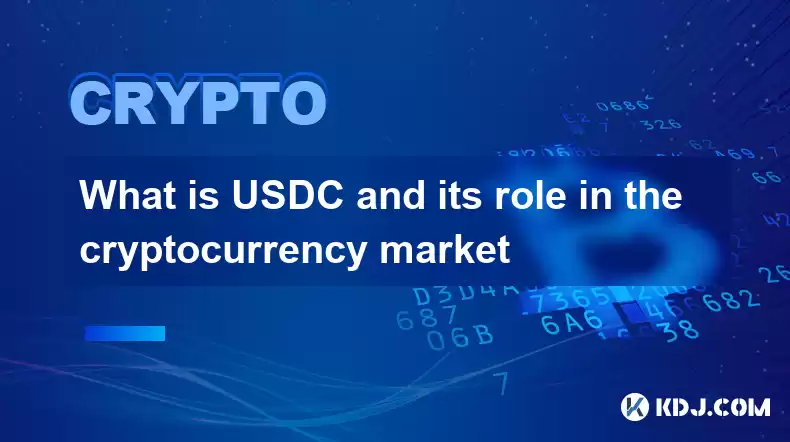
Key Points:
- USDC's definition and underlying mechanisms.
- USDC's role as a stablecoin and its impact on market volatility.
- USDC's use cases within the crypto ecosystem, including trading, lending, and DeFi.
- Comparison of USDC with other stablecoins and its advantages and disadvantages.
- Regulation and oversight of USDC and its implications for the future.
What is USDC and its role in the cryptocurrency market?
USDC, or USD Coin, is a stablecoin pegged to the US dollar. This means that 1 USDC is designed to always be worth $1. Unlike volatile cryptocurrencies like Bitcoin or Ethereum, USDC aims for price stability, making it attractive for users seeking to reduce risk. Its stability is maintained through a reserve of assets, primarily US dollar-denominated assets held by the issuer, Circle. Transparency in these reserves is a key feature, aiming to build trust and confidence.
The core function of USDC is to provide a stable and reliable store of value within the often turbulent cryptocurrency market. This allows users to easily convert their holdings to a fiat-equivalent without the volatility associated with other crypto assets. It acts as a bridge between the traditional financial system and the decentralized world of crypto. This bridging role is crucial for facilitating smoother transactions and reducing friction in the crypto space.
USDC's role extends beyond simply being a stable store of value. It plays a vital part in the burgeoning decentralized finance (DeFi) ecosystem. Many DeFi platforms utilize USDC as a collateral asset for lending and borrowing, facilitating the creation of various financial instruments and applications. Its stability makes it ideal for these applications, as price fluctuations could significantly impact the functionality of these platforms. Its use as collateral reduces the risk associated with volatile cryptocurrencies.
One significant advantage of USDC is its ease of use. Many centralized exchanges list USDC, simplifying the process of buying, selling, and trading it. This accessibility contrasts with some other stablecoins, which might have limited availability on certain platforms. This accessibility contributes to its widespread adoption and makes it a preferred option for many users navigating the crypto landscape. The seamless integration with existing financial infrastructure further enhances its usability.
A key aspect of USDC is its regulatory framework. Circle, the issuer, is subject to various regulations, including those related to anti-money laundering (AML) and know-your-customer (KYC) compliance. This regulatory oversight aims to enhance the security and trustworthiness of USDC, mitigating potential risks associated with unregulated stablecoins. However, the regulatory landscape for stablecoins is still evolving, and future changes could significantly impact USDC's operation and acceptance.
The market capitalization of USDC is a significant factor in its influence. Its substantial market presence makes it a prominent player in the cryptocurrency landscape, influencing trading volumes and liquidity across numerous exchanges and platforms. This significant market share enhances its stability and further solidifies its role as a leading stablecoin. The large user base contributes to its liquidity and resilience.
Comparing USDC to other stablecoins reveals its strengths and weaknesses. While other stablecoins, like Tether (USDT), also strive for dollar parity, USDC distinguishes itself through its transparency and regulatory compliance. This transparency builds trust among users concerned about the reserves backing other stablecoins. However, USDC’s reliance on centralized control and regulation might be a drawback for users prioritizing decentralization.
How does USDC maintain its peg to the US dollar?
USDC maintains its peg through a process involving a reserve of assets. Circle, the issuer, holds a reserve predominantly comprising US dollar-denominated assets, aiming for a 1:1 ratio with circulating USDC. This reserve is regularly audited to ensure transparency and accountability, aiming to maintain public confidence in the peg. However, the specifics of the reserve composition and auditing process are subject to change and scrutiny.
The reserve's composition is a crucial aspect of maintaining the peg. Circle’s strategy in managing the reserve involves adjustments based on market demand and fluctuations. This dynamic management seeks to ensure the stability of the peg even amidst market volatility. Audits provide independent verification of the reserve’s value, building trust and confidence among users.
What are the risks associated with USDC?
Despite its efforts to maintain stability, USDC, like all stablecoins, faces potential risks. These include the risk of de-pegging, where the value of USDC deviates from $1. This could occur due to unforeseen events impacting the reserve's value or issues related to the regulatory environment. Counterparty risk, related to Circle's solvency, is another factor to consider.
Regulatory changes could also significantly impact USDC. Increased scrutiny or new regulations could affect its operations and even lead to restrictions on its use. The evolving regulatory landscape poses a continuous challenge to maintain its stability and wide acceptance. The potential for unforeseen circumstances to impact the peg remains a significant risk.
What are the advantages of using USDC?
The advantages of USDC stem from its design as a stablecoin. Its relative price stability compared to other cryptocurrencies makes it a safer option for holding value. Its widespread acceptance on exchanges and DeFi platforms offers increased usability and liquidity. Transparency and regulatory compliance are also significant advantages.
The ease of access and use of USDC are notable benefits. Its integration with many platforms simplifies transactions and reduces friction. The regulatory oversight provides a degree of security and confidence not found with some other stablecoins. The relative ease of converting between USDC and fiat currency is another key advantage.
Common Questions:
Q: Is USDC backed by the US government?
A: No, USDC is not backed by the US government. It's backed by a reserve of assets held by Circle, primarily US dollar-denominated assets.
Q: How is USDC different from USDT?
A: While both are stablecoins pegged to the US dollar, USDC emphasizes transparency and regulatory compliance more than USDT. The specifics of their reserve management and auditing differ significantly.
Q: Can USDC be used for everyday purchases?
A: While not as widely accepted as fiat currencies, USDC is increasingly used for online purchases at some merchants that accept cryptocurrencies. Its acceptance is still expanding.
Q: What happens if Circle goes bankrupt?
A: The impact of Circle's potential bankruptcy on USDC is a complex issue. The stability of the peg would depend on the management of the reserve and the actions taken to protect the value of USDC in such a scenario.
Q: Is USDC a secure investment?
A: No investment is entirely secure. While USDC aims for stability, it's still subject to market risks and regulatory uncertainties. Its relative stability compared to other cryptocurrencies doesn't eliminate all risks.
Disclaimer:info@kdj.com
The information provided is not trading advice. kdj.com does not assume any responsibility for any investments made based on the information provided in this article. Cryptocurrencies are highly volatile and it is highly recommended that you invest with caution after thorough research!
If you believe that the content used on this website infringes your copyright, please contact us immediately (info@kdj.com) and we will delete it promptly.
- Token Unlocks and Altcoin Mania: A Wild Week Ahead!
- 2025-07-28 04:30:12
- Hayden Davis's LIBRA Token: From Investment Promise to Memecoin Mayhem
- 2025-07-28 04:30:12
- AI Tokens on CoinMarketCap: The New Millionaire Maker?
- 2025-07-28 04:35:18
- BONK Price, Solana Meme Coin Mania, and PENGU Pressure: What's the Haps?
- 2025-07-28 03:50:12
- Bitcoin, Ruvi AI, and CoinMarketCap: Navigating the Future of Crypto
- 2025-07-28 02:30:12
- Ethereum ETF Mania & BNB's Breakout: A New Yorker's Crypto Take
- 2025-07-28 03:50:12
Related knowledge
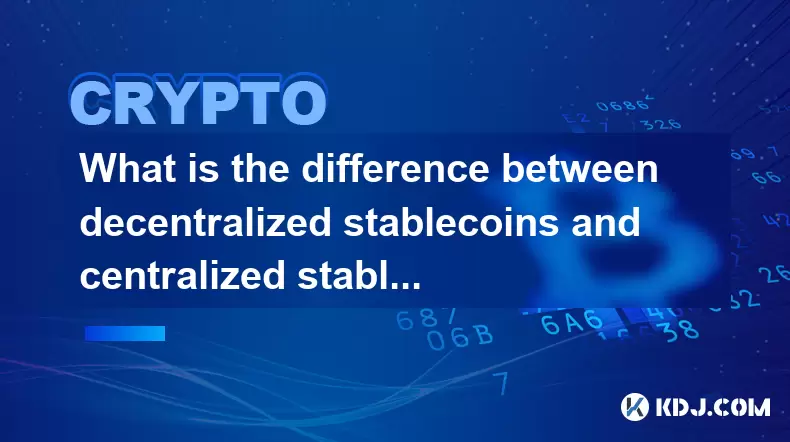
What is the difference between decentralized stablecoins and centralized stablecoins? Pros and cons comparison
Jun 15,2025 at 09:42am
What Are Stablecoins and Why Do They Matter?Stablecoins are a category of cryptocurrencies designed to maintain a stable value, usually pegged to an e...
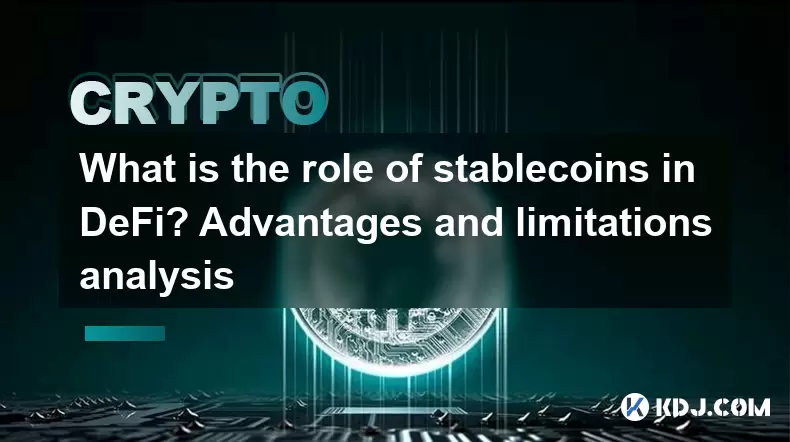
What is the role of stablecoins in DeFi? Advantages and limitations analysis
Jun 14,2025 at 06:28am
Understanding Stablecoins in the DeFi EcosystemStablecoins play a pivotal role in the decentralized finance (DeFi) landscape by providing a bridge bet...

How do algorithmic stablecoins work? Potential risks and market impact
Jun 12,2025 at 02:07pm
Understanding Algorithmic StablecoinsAlgorithmic stablecoins are a type of cryptocurrency designed to maintain a stable value relative to a specific a...
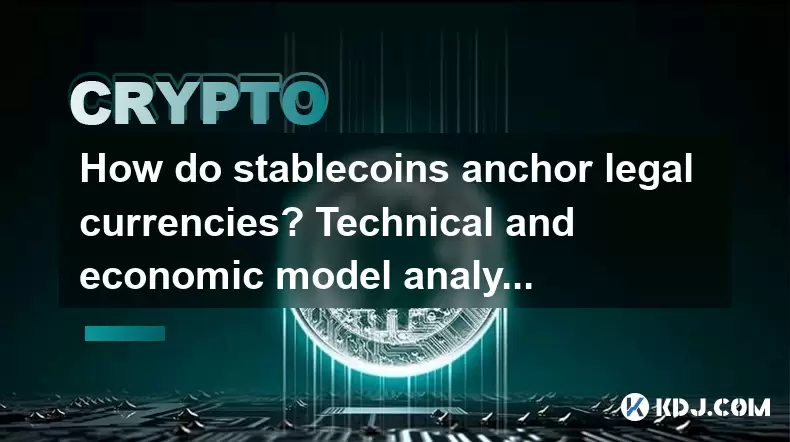
How do stablecoins anchor legal currencies? Technical and economic model analysis
Jun 16,2025 at 08:43am
Understanding the Concept of StablecoinsStablecoins are a category of cryptocurrencies designed to maintain a stable value relative to a specific asse...
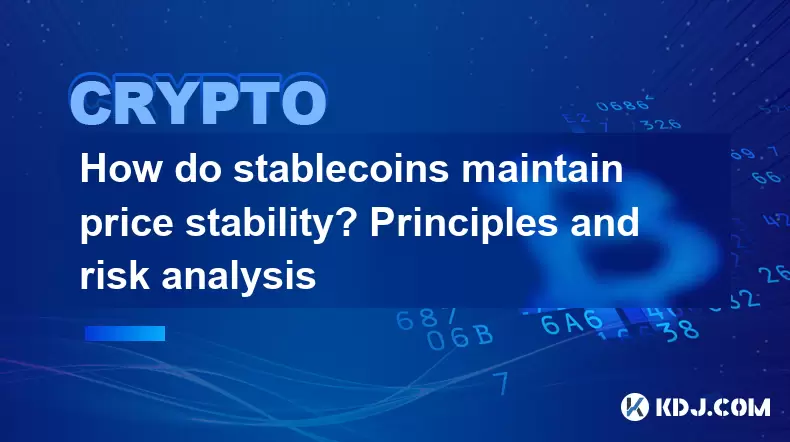
How do stablecoins maintain price stability? Principles and risk analysis
Jun 11,2025 at 12:01am
Understanding the Mechanisms Behind Stablecoin StabilityStablecoins are a category of cryptocurrencies designed to minimize price volatility, often pe...

What is the operating mechanism of stablecoins? In-depth exploration of its stability principle
Jun 10,2025 at 09:28pm
Understanding the Core Concept of StablecoinsStablecoins are a unique category within the cryptocurrency market, designed to address one of the most s...

What is the difference between decentralized stablecoins and centralized stablecoins? Pros and cons comparison
Jun 15,2025 at 09:42am
What Are Stablecoins and Why Do They Matter?Stablecoins are a category of cryptocurrencies designed to maintain a stable value, usually pegged to an e...

What is the role of stablecoins in DeFi? Advantages and limitations analysis
Jun 14,2025 at 06:28am
Understanding Stablecoins in the DeFi EcosystemStablecoins play a pivotal role in the decentralized finance (DeFi) landscape by providing a bridge bet...

How do algorithmic stablecoins work? Potential risks and market impact
Jun 12,2025 at 02:07pm
Understanding Algorithmic StablecoinsAlgorithmic stablecoins are a type of cryptocurrency designed to maintain a stable value relative to a specific a...

How do stablecoins anchor legal currencies? Technical and economic model analysis
Jun 16,2025 at 08:43am
Understanding the Concept of StablecoinsStablecoins are a category of cryptocurrencies designed to maintain a stable value relative to a specific asse...

How do stablecoins maintain price stability? Principles and risk analysis
Jun 11,2025 at 12:01am
Understanding the Mechanisms Behind Stablecoin StabilityStablecoins are a category of cryptocurrencies designed to minimize price volatility, often pe...

What is the operating mechanism of stablecoins? In-depth exploration of its stability principle
Jun 10,2025 at 09:28pm
Understanding the Core Concept of StablecoinsStablecoins are a unique category within the cryptocurrency market, designed to address one of the most s...
See all articles

























































































